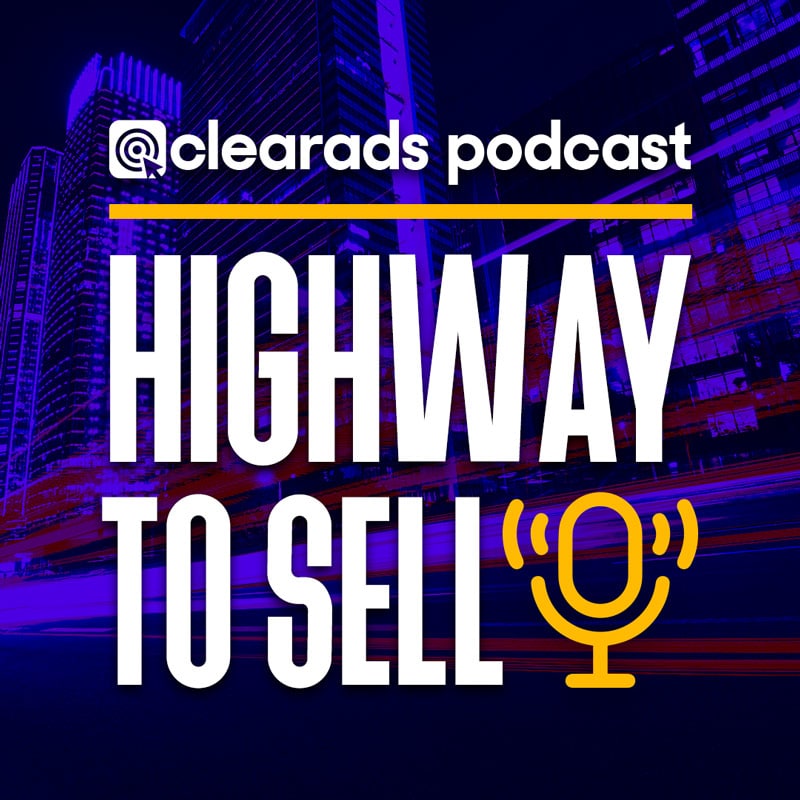Tom:
Welcome to the Clear Ads Podcast, Highway to Sell. I’m your host, Tom Hor, and I’m joined once again by our Head of Marketing, Sarah Lamb. You may remember her from a couple of months ago when we talked about multichannel and omnichannel marketing. She’s back today for a deep dive into a different topic.
We’re not focusing solely on Amazon advertising this time. Instead, we’re asking: are big high street brands missing a trick by not advertising on Amazon? And for those that are, are they doing it properly? Have they optimized their listings as much as they should?
Welcome back, Sarah.
Sarah Lamb:
Thank you, it’s nice to be back.
Tom:
Great! Let’s dive into it. Amazon is one of the world’s biggest marketplaces, and e-commerce sales made up about 14% of total retail sales in 2022. On that basis, you’d think all the big household brands we see on the high street would also be on Amazon. Yet when you look, very few are. Why do you think that is?
Sarah:
It’s a good question. To me, it feels like many of them are missing out. Amazon is just another distribution channel—no different to adding another retail partner like Debenhams or Next back in the day. The platform is designed for it. And yet when we look, most high street fashion brands, for example, are nowhere to be found on Amazon UK.
Meanwhile, consumers are already there. They’re ready to buy. Platforms like Walmart Marketplace, Target, and eBay show that the demand is huge. To me, it feels foolish for big brands not to meet customers where they’re shopping.
Tom:
Exactly. Amazon used to be known as the home for small brands. Anyone could start a business from their bedroom or a small warehouse. But the platform has evolved, especially in categories like fashion. Interactive listings now allow shoppers to see complete outfits on models, with clickable dots leading to each item. It’s designed for big brands—yet they’re absent.
And it’s not because they’re afraid of being listed alongside competitors. Department stores already do that. I wonder if the barrier is Amazon’s fees. For smaller sellers, giving up a cut of revenue is simply the cost of entry. For big brands that have already “cut their teeth” in retail, maybe they don’t want to give up that share when they can sell directly through their websites or cheaper platforms.
Sarah:
Possibly. But the fact is, shoppers are already using Amazon as a search engine. Years ago, people Googled “best shoes.” Now, they just go straight to Amazon. Even if they don’t buy there, they use it to research. I do it myself, and I’m not alone.
That’s where big brands are missing out. If they’re not present, they’re invisible in that research phase. And if their competitors are there with better listings and competitive pricing, they lose potential customers.
Tom:
Exactly. And Amazon is more than just a store—it’s a brand in itself. Forty percent of all U.S. e-commerce sales happen on Amazon. Add in 150 million Prime members worldwide, and you see how powerful the loyalty factor is. People will often buy from Amazon even if it’s slightly more expensive because of the convenience and free delivery.
Sarah:
And brands don’t need to list everything. They could test with their top 5–10 products. Look at IKEA. They’ve cleverly listed smaller, frequently purchased items—garlic presses, can openers, bedding—things people want quickly, without filling a basket on the IKEA site. They’ve even advertised their gift cards on Amazon, driving customers back to their stores. That’s smart.
Tom:
It’s a perfect example. Other brands like Nike, Levi’s, and L’Oréal are also doing it well. Nike, for instance, increased Amazon sales by over 20% with advertising, and they allow wholesalers to resell their products—maximizing their presence across the platform.
Sarah:
Exactly. But not all brands do it right. Dyson, for example, has great products but poor listings. Their Dyson Airwrap sells for around $600, yet their product title and details are minimal. No bullet points, little information. Meanwhile, competitors like Shark and Revlon offer detailed listings at half or a fraction of the price, with thousands of reviews.
Tom:
That’s where it becomes risky. A strong brand can get away with minimal effort if the product is cheap and universally known, like Coca-Cola. But when you’re asking customers to spend hundreds of dollars, you can’t rely on brand recognition alone. Poor listings make competitors look better, and you risk damaging your reputation.
Sarah:
Exactly. It’s better not to list at all than to list poorly. But the smarter approach is to take pride in your brand presence. Flesh out your listings, use bullet points, highlight features—give customers reasons to choose you. Brands like Oral-B and Philips are great examples in the toothbrush space. Their listings are thorough and persuasive.
Tom:
That’s the lesson. Don’t take your brand name for granted. Don’t assume people will always remember it or search for it. Advertising should target keywords like “vacuum cleaner” or “electric toothbrush,” not just “Dyson” or “Oral-B.” Build visibility beyond your brand loyalists.
Sarah:
And if you’re unsure, use part of your R&D budget to test it. Start small, get expert advice, and optimize properly. Otherwise, you risk leaving huge gaps for competitors to fill.
Tom:
Exactly. That’s a perfect note to close on.
Sarah, thank you again for joining me—it’s always a pleasure. And to our listeners, we hope you’ve enjoyed this episode. Please share it with colleagues, friends, or anyone interested in advertising. And if you’d like Clear Ads to support your brand on Amazon, visit clearadsagency.com to book a call.
Until next time, thank you for listening.
Sarah:
Thank you. Bye!
